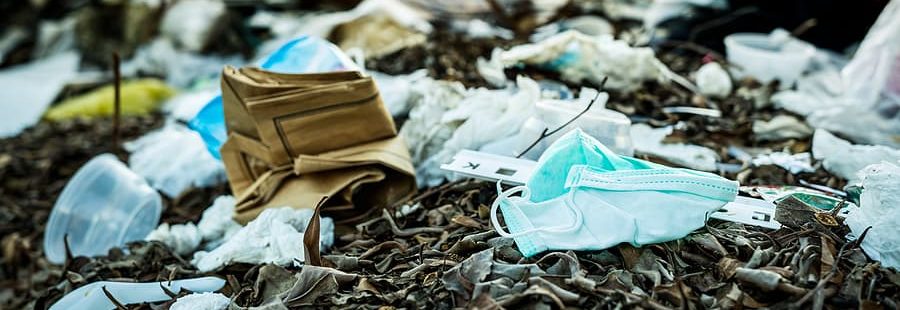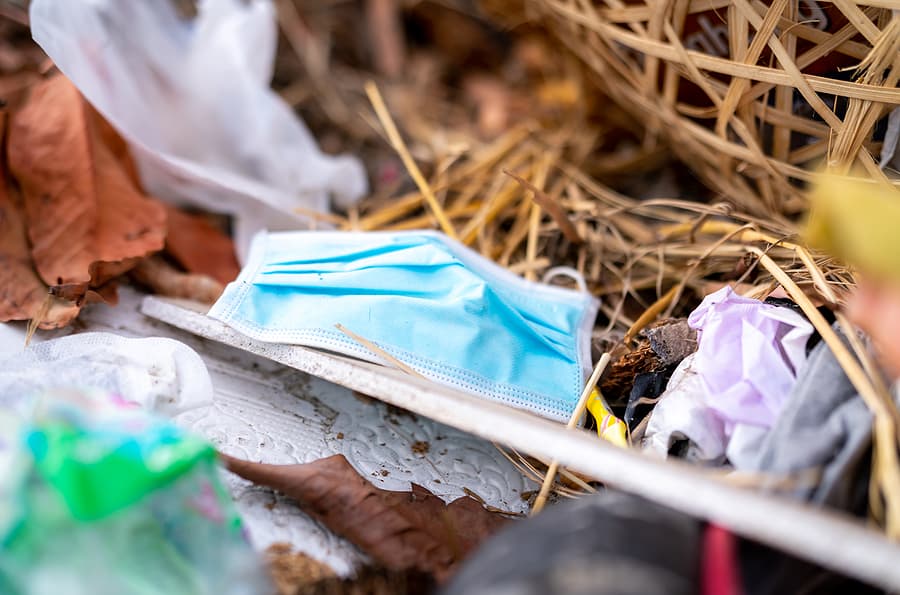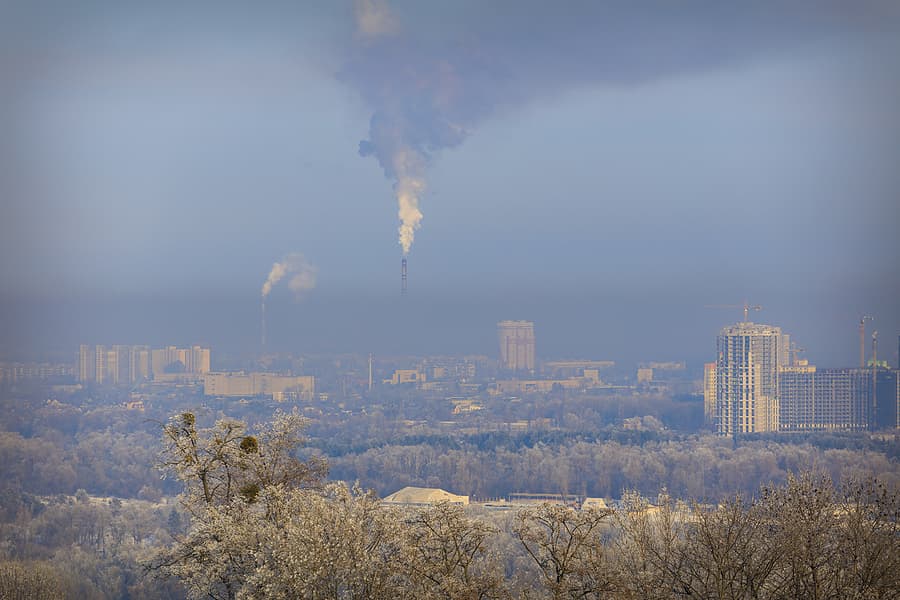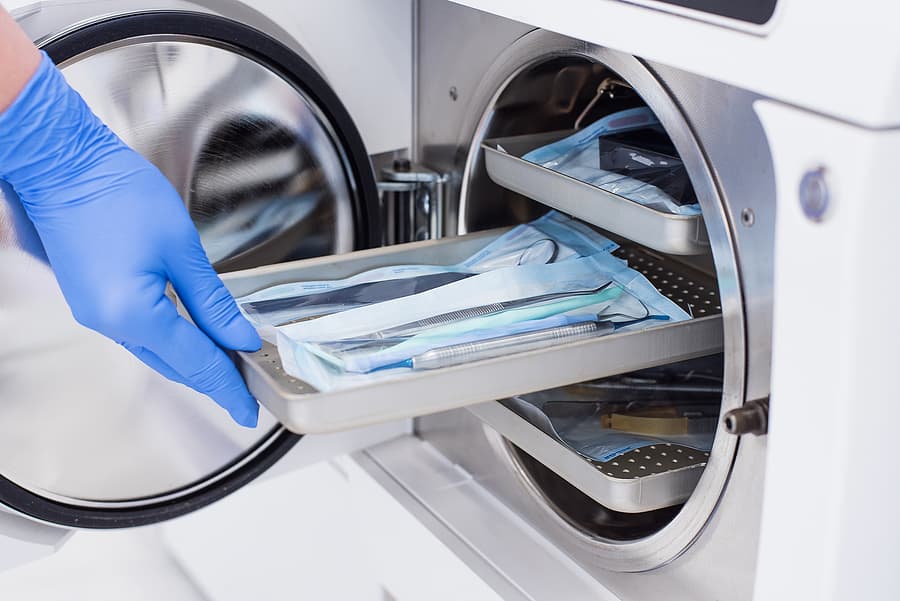Medical Waste and the Environmental Impact

Healthcare is an essential service for communities throughout the world. People depend on medical treatments to restore and maintain their health, regardless of age or location. When medical activities are performed, a specific subset of waste is created. The majority of medical waste is non-hazardous, but about 15% may be infectious, chemical, or radioactive.
All types of medical waste contribute to environmental issues. From excess plastic waste to the release of toxic pollutants, medical waste can cause serious damage when not properly handled. Luckily, the US is working toward reducing negative medical waste environmental impacts with increased research, resources, and regulations related to medical waste.
Catastrophic Environmental Effects of Medical Waste
Plastic Pollution

Plastic pollution is a global problem that affects humans and wildlife. According to the World Health Organization (WHO), medical waste accumulated throughout the COVID-19 pandemic increased plastic pollution in the oceans by 10 times. The increase came from the need for personal protective equipment (PPE), the use of test kits, and the administration of vaccines.
PPE and other plastics dumped in the ocean release millions of plastic fibers and microplastics into the water. The particles pollute the air, soil, and rainwater. Animals ingest them and become part of the food chain, transmitting toxic substances to humans. Recent studies have found microplastics in human blood, lungs, and placenta; showing just how serious the consequences of plastic pollution are.
Contamination
When compared to general waste, medical waste has a higher risk of environmental contamination because of its infectious and toxic characteristics. When untreated or treated improperly, medical waste contaminates the environment causing damage to all living nearby.
Biomedical waste and chemicals (including disinfectants) contaminate groundwater and pollute waterways endangering aquatic life and damaging agricultural irrigation systems. Rodents, birds, and other animals are also more likely to catch and spread parasites and bacterial infections when exposed to medical waste.
Poor Air Quality

Air pollutants are created by medical waste when inadequate or inappropriate incineration practices occur. Specifically, the incineration of materials containing chlorine or heavy metals generates human carcinogens (dioxins and furans) and spreads toxic metals into the environment.
The healthcare sector is a huge generator of greenhouse gas emissions as a whole with medical waste being a top contributor. A 2010 study estimates that each staffed hospital bed results in 33.8 pounds of waste per day and beyond that, hospitals dispose of approximately 2 million pounds of supplies annually that were never even used.
More efficient management of medical waste paired with proper treatment would reduce waste and pollution, improving air quality and environmental distress.
Health Risks
The health risks of exposure to untreated medical waste are enormous. Medical waste may contain harmful microorganisms that can infect humans and animals. Used needles and sharps can cause injury and spread disease. Pharmaceuticals can release antibiotics, cytotoxic drugs, mercury, and dioxins into the environment.
Improper disposal of medical waste has been linked to the spread of HIV, Hepatitis B and C, parasitic infections, Tuberculosis, lung infections, skin infections, Cholera, and more. Air pollution is linked to heart issues, stroke, increased hospitalization, and premature death. Water pollution spreads pathogenic microbes causing waterborne illnesses like Giardiasis, leptospirosis, and salmonella.
Solving the Problem

Mismanagement of medical waste stems from inadequate training in waste handling and the lack of appropriate regulations or enforcement of regulations. Promoting safe practices to reduce waste volumes and using proper waste segregation will decrease costs for your organization and the risks associated with medical waste.
Environmentally-friendly disposal treatments like autoclaving, microwaving, and steam treatments should be selected over unsafe incineration. WHO has developed comprehensive guidance and training modules regarding waste minimization and safe disposal. This and similar resources can be helpful when creating and updating your waste management plan.
Proper Medical Waste Disposal: The Solution to the Environmental Impact of Medical Waste
Medical waste disposal starts with the healthcare provider. Segregation should occur immediately. Biohazardous wastes should be identified and put into the appropriate containers. Color codes help professionals quickly identify the type of waste they are handling. Containers should have proper labels and be kept in a secure, dry area until picked up or shipped to a waste management company.
Safe and effective medical waste companies are available in your area with Medical Waste Pros. Our disposal companies are compliant with local, state, and federal regulations. We use environmentally-friendly practices to protect our communities and the health of future generations. Our methods include autoclaving, chemical disinfection, and incineration (with approved emissions standards).
The costs of medical waste disposal vary by location, waste volume, frequency of service, and more. Compliance training and proper segregation can save you money, as well as partnering with one of our reliable companies.
Minimize Your Medical Waste Environmental Impact with Medical Waste Pros Today
Contact us today by calling (888) 755-6370 or filling out the form. We will connect you with medical waste disposal experts near you in just minutes. Our services will help protect your community from the hazards of medical waste and save money for your organization. We look forward to working with you.










